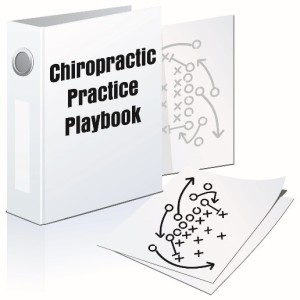An Introduction to the Practice Development Process of Continuous Improvement
A key difference between a successful and profitable chiropractic business and a roller coaster type practice can be traced back to procedures and systems.
Many practice problems occur because procedures are not established, consistently followed, and regularly improved. This has been the secret to franchising. Starbucks may offer new products and services now and then, but for the most part, they follow their checklists and manuals of successful procedures. The local New Age coffee shop down on the corner with the unemployed guitar player usually lasts for about a year before the owner’s savings and inspiration dry up, along with the last cup of coffee.
Of all the categories of systems in your office, what would you say would be the most important?
☐Patient Accounts (Billing/Collections) Systems
☐Marketing Systems
☐Front Desk Systems
☐Therapy and Clinical Support Systems
☐ Doctor Systems
☐ Business Systems (Payroll, Financial Planning, Taxes,)
☐ Leadership
☐Office, Practice Management Systems
My guess is that you usually keep most billing procedures in place as… obviously, you need to be paid. And, you will usually keep most front desk procedures in place. These deal with patients and patients are obviously in the office, or not. And you, of course, follow your clinical procedures.
Your marketing procedures come and go, at least they do in most offices. They are just not consistent. This is why I put together the Marketing Manager System in 2000. The biggest error in most offices with their marketing is that it simply isn’t done consistently.
But the most important category of systems is not so obvious. These are the management procedures and systems. Why are these most important? Because they keep all the other procedures in place and are continually being improved upon.
Why do you think CEO’s are paid so much money? Because they are in charge of the management of a business and are able to increase its bottom line by the millions. They have procedures that they follow and insist that others do as well. These procedures all add up to systems.
Over the years, Petty Michel and Associates has been very successful at increasing the revenues of practices. One of the reasons is that we implement what we call the Practice Development Process. It is a monthly system of management that gradually works to objectively improve the business, repetitively over and over. It integrates into your current systems and does not take that much extra time. But in the end, it saves you a great deal of time, extra work, and lost revenue.
To learn more about the 3Goals Practice Development Process: 3Goals PDP






